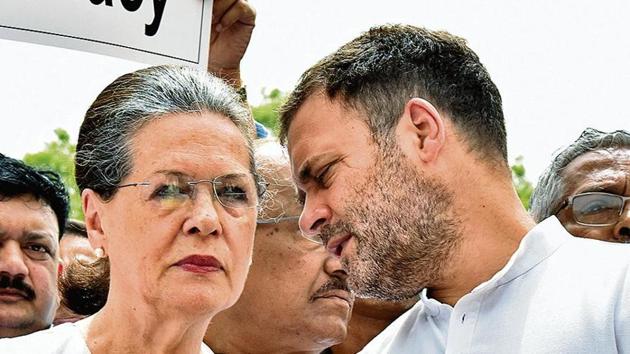Analysis | Loss of Goa bypolls planted the seeds of current turmoil
Sensing disaffection in the Congress ranks and eager to shake off its own dependence on allies, the Bharatiya Janata Party began working on inducing defections, BJP leaders privy to the developments said on condition of anonymity.
Seeds of the current turmoil in Congress’s Goa unit were sown when the party lost three of the four assembly bypolls whose results were declared simultaneously with the Lok Sabha poll outcome on May 23. Sensing disaffection in the Congress ranks and eager to shake off its own dependence on allies, the Bharatiya Janata Party began working on inducing defections, BJP leaders privy to the developments said on condition of anonymity.

The strategy paid off. On Wednesday, 10 of the 15 Congress legislators split from the party and merged with BJP. The Congress, which had 14 MLAs in the 40-member assembly before the bypolls, had been expecting to defeat the BJP in all four seats and planned to stake its claim to forming government in Goa with the support of a legislator each from the Nationalist Congress Party and Maharashtrawadi Gomantak Party.
Coupled with the drubbing the Congress received in the national elections, in which it managed to win just 52 seats against 303 for the BJP, the Goa reverses created a sense among party politicians that defeating the BJP in the western Indian state would be virtually impossible, said a Congress legislator who didn’t want to be named. Goa BJP organisation secretary Satish Dhond, considered close to chief minister Pramod Sawant, was given the task of establishing contact with Kalvekar and newly elected Congress MLA Atanasio Monserrate, who joined the Congress just before the May bypolls, according to one of BJP leaders cited in the first instance said.
Key was to avoid falling under the ambit of the anti-defection law. “They told them that at least 10 Congress MLAs will be needed to merge the group with the BJP,” the BJP leader said, citing this as the reason why the mass defections had taken almost one-and-a-half months to engineer after the declaration of results.
A month ago, on June 11, Goa Congress president Girish Chodankar, in a press conference, claimed that the ruling BJP was offering ₹40 crore to each of its MLAs to switch sides.
State BJP president Vinay Tendulkar was quick to rubbish the claim as “fiction” but conceded that a group of 10 Congress MLAs had approached the party, offering to split from the Congress and extend support to the BJP. Tendulkar, however, said the BJP’s central leadership had rejected the offer. Tendulkar claimed it was the Congress legislators who approached the BJP and not the other way around.
There was some truth in what he said, another BJP leader said, adding that CM Sawant was able to convince the party’s central leadership eventually to accept the merger offer on grounds that he was getting “increasingly frustrated” over being ‘bullied’ by Goa Forward Party leader Vijai Sardesai and independent MLA, Rohan Khaunte, two ministers in his cabinet.
Kavlekar and Monserrate were the channels for Dhond to hold “secret” meetings with the Congress legislators, who openly expressed their “frustration” over their party’s central leadership, according to BJP politicians. The Congress believes that it was Monserrate who persuaded most of the MLAs to join the BJP. “Some of these MLAs have told me that they were being approached for the last two to three months,” said Congress general secretary in-charge of Goa A Chellakumar.
He, like many other state Congress leaders, admitted that they had not expected so many legislators to leave the party en masse.
Political analyst Cleofato Almeida Coutinho believes the timing of this move was aimed at weakening the morale of the Congress-JD(S) coalition in Karnataka, where the alliance has managed to hold on stubbornly in office despite a spate of resignations by legislators.






